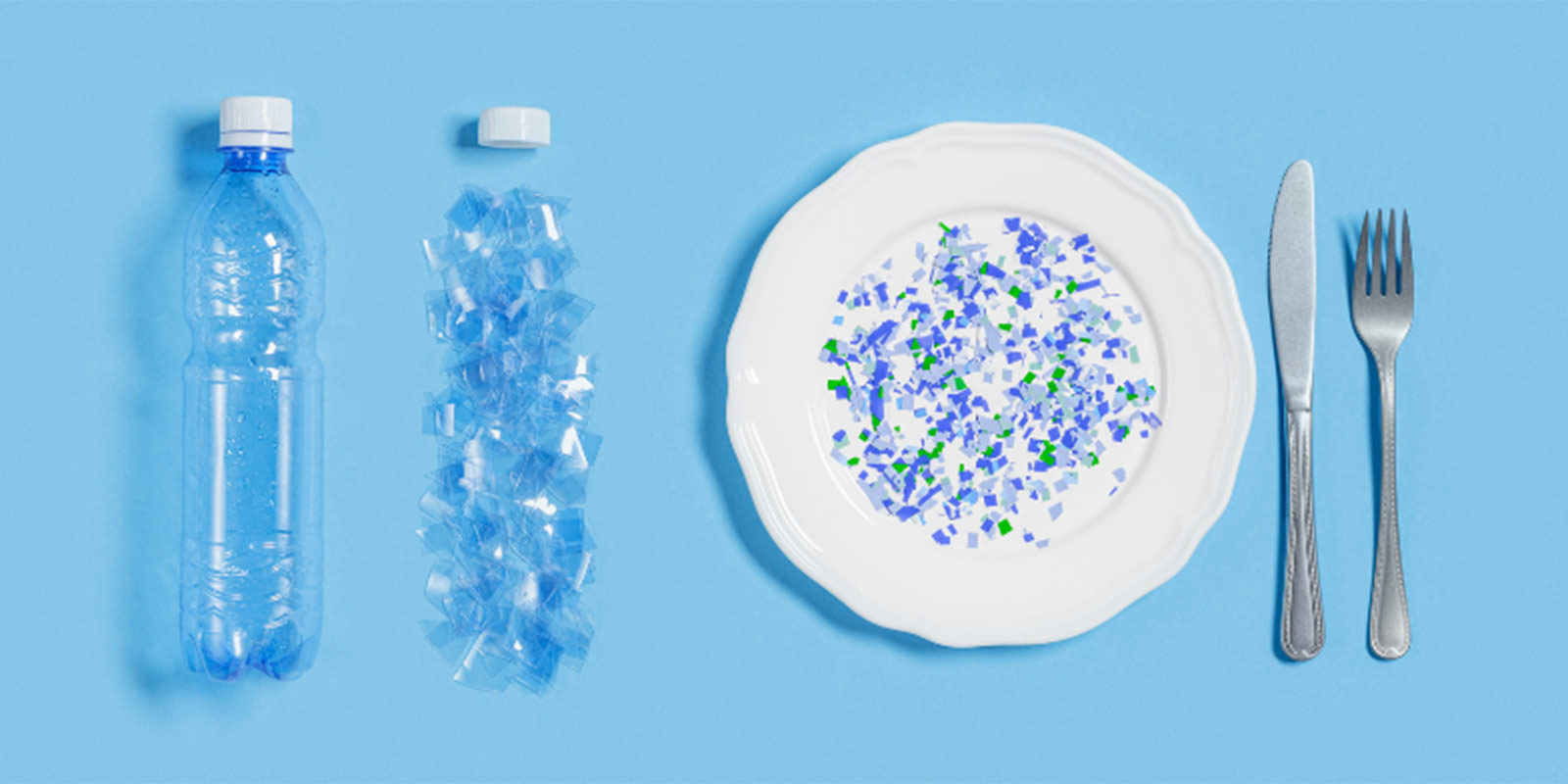12 Easy Ways to Avoid Microplastics

As a parent myself, I’ve always been deeply aware of the toxic burden on our bodies. And with the exponential increase in childhood illnesses, allergies, neurodevelopmental delays, and autoimmune conditions, it’s apparent that our children are the canaries in the coal mine.
Recent research has revealed that microplastics are not only pervasive but also significantly more prevalent in the bodies of babies and children. For instance, microplastics have been found to be ten times higher in babies’ faeces compared to adults. Moreover, infants fed with plastic bottles may ingest millions of microplastic particles every day, a worrying figure that emphasizes the need to be cautious of the materials that come in contact with our children.
Microplastics pose unique health risks. They can attach to the outer membranes of red blood cells, potentially hindering their ability to transport oxygen throughout the body. This can have serious implications for the overall health and development of our children. Additionally, microplastics have been detected in the placentas of pregnant women. In animal studies, microplastics have been found to pass swiftly through the lungs into the hearts, brains, and other organs of developing foetuses. These findings underscore the need for immediate action to protect our children from the dangers of microplastic exposure.
Given the rising concern over the escalating rates of childhood illnesses, allergies, neurodevelopmental delays, and autoimmune conditions, it’s clear that our children are facing unprecedented toxic burdens. So, what can we, as vigilant parents, do to safeguard our children’s health and wellbeing? Taking even one step towards reducing toxic exposure is a positive move, so don’t let yourself get overwhelmed—any effort counts.
Here are twelve practical and actionable steps that can significantly reduce the toxic exposure that our children encounter daily:
- Avoid Plastic Bottles: Opt for stainless steel drinking bottles from reputable brands like Klean Kanteen or One Green Bottle. Stainless steel is a safer and more durable alternative to plastic.
- Don’t Microwave Plastic: When heating food, avoid using plastic containers in the microwave. High heat can cause plastic to release harmful chemicals into food.
- Use Filtered Water: Invest in a high-quality water filter to ensure that your family’s drinking water is free from harmful contaminants, including microplastics.
- Store Food Properly: Use glass, ceramic, or stainless steel containers to store food. These materials are safer than plastic and do not leach harmful chemicals into food.
- Choose Natural Ingredients: When shopping for clothes and bedding, opt for items made from natural materials such as organic cotton, hemp, or bamboo. These materials are safer for your child’s skin and do not contain harmful chemicals.
- Opt for Clean Salt Brands: Some salt brands contain microplastics. Look for brands like Le Guerandais Coarse Sea Salt, which are known for their clean, high-quality products.
- Support Liver and Gallbladder: Incorporate liver and gallbladder-supporting foods and supplements into your child’s diet, such as dandelion, milk thistle, NAC, and glutathione. These nutrients can help support the body’s natural detoxification processes.
- Maintain Gut Health: Probiotics, prebiotics, and naturally antimicrobial foods like coconut oil, garlic, onions, and citrus fruits can help maintain a healthy gut microbiome and reduce the risk of toxic exposure.
- Choose Plastic-Free Cosmetics: Opt for cosmetics and beauty products that are free from microbeads and other harmful chemicals. Look for products with natural ingredients and eco-friendly packaging.
- Change your Laundry Routine to Reduce the Release of Microplastics: Synthetic fibres like nylon, polyester, and acrylic can release hundreds of thousands of microplastics per wash. Use a microfiber laundry bag or laundry balls like the Cora Ball to trap microplastics. Air-dry clothes to reduce microplastic production.
- Limit Seafood Consumption: Seafood can be a source of microplastic ingestion. To reduce exposure, limit seafood consumption or choose sustainably sourced options.
- Opt for Plastic-Free Tea Bags: Many tea bags contain plastic, which can release harmful chemicals when steeped in hot water. Choose loose-leaf tea or brands like NealsYard Mind-Soul, Pukka Herbs, and teapigs that use plastic-free tea bags.
As parents, we face an unprecedented challenge in safeguarding our children from the rising tide of microplastic pollution. The threats they pose to our health and well-being are now impossible to ignore. However, by being proactive and implementing the practical steps outlined in this article, we can significantly reduce the toxic burden our children face daily. Taking even one step towards a plastic-free life is a victory in the fight against microplastics. Together, we can create a healthier and more sustainable future for our children.
References
To Waste or Not to Waste: Questioning Potential Health Risks of Micro- and Nanoplastics with a Focus on Their Ingestion and Potential Carcinogenicity”. Exposure and Health, 15, 33–51. https://doi.org/10.1007/s12403-022-00323-1 Gruber, E. S., Stadlbauer, V., Pichler, V., Resch-Fauster, K., Todorovic, A., Meisel, T. C., Trawoeger, S., Hollóczki, O., Turner, S. D., Wadsak, W., Vethaak, A. D., & Kenner, L. (2023).
Plasticenta: First evidence of microplastics in human placenta.” Environment International, 146, Article 106274. https://doi.org/10.1016/j.envint.2020.106274. Ragusa, A., Svelato, A., Santacroce, C., Catalano, P., Notarstefano, V., Carnevali, O., Papa, F., Rongioletti, M.C.A., Baiocco, F., Draghi, S., D’Amore, E., Rinaldo, D., Matta, M., & Giorgini, E. (2020).
Discovery and quantification of plastic particle pollution in human blood.” Environment International, 160, Article 107199. https://doi.org/10.1016/j.envint.2022.107199. Leslie, H. A., van Velzen, M. J. M., Brandsma, S. H., Vethaak, A. D., Garcia-Vallejo, J. J., & Lamoree, M. H. (2022).
Occurrence of Polyethylene Terephthalate and Polycarbonate Microplastics in Infant and Adult Feces. Environmental Science & Technology Letters, 8(11), 989–994. https://doi.org/10.1021/acs.estlett.1c00559.Zhang, J., Wang, L., Trasande, L., & Kannan, K. (2021).


